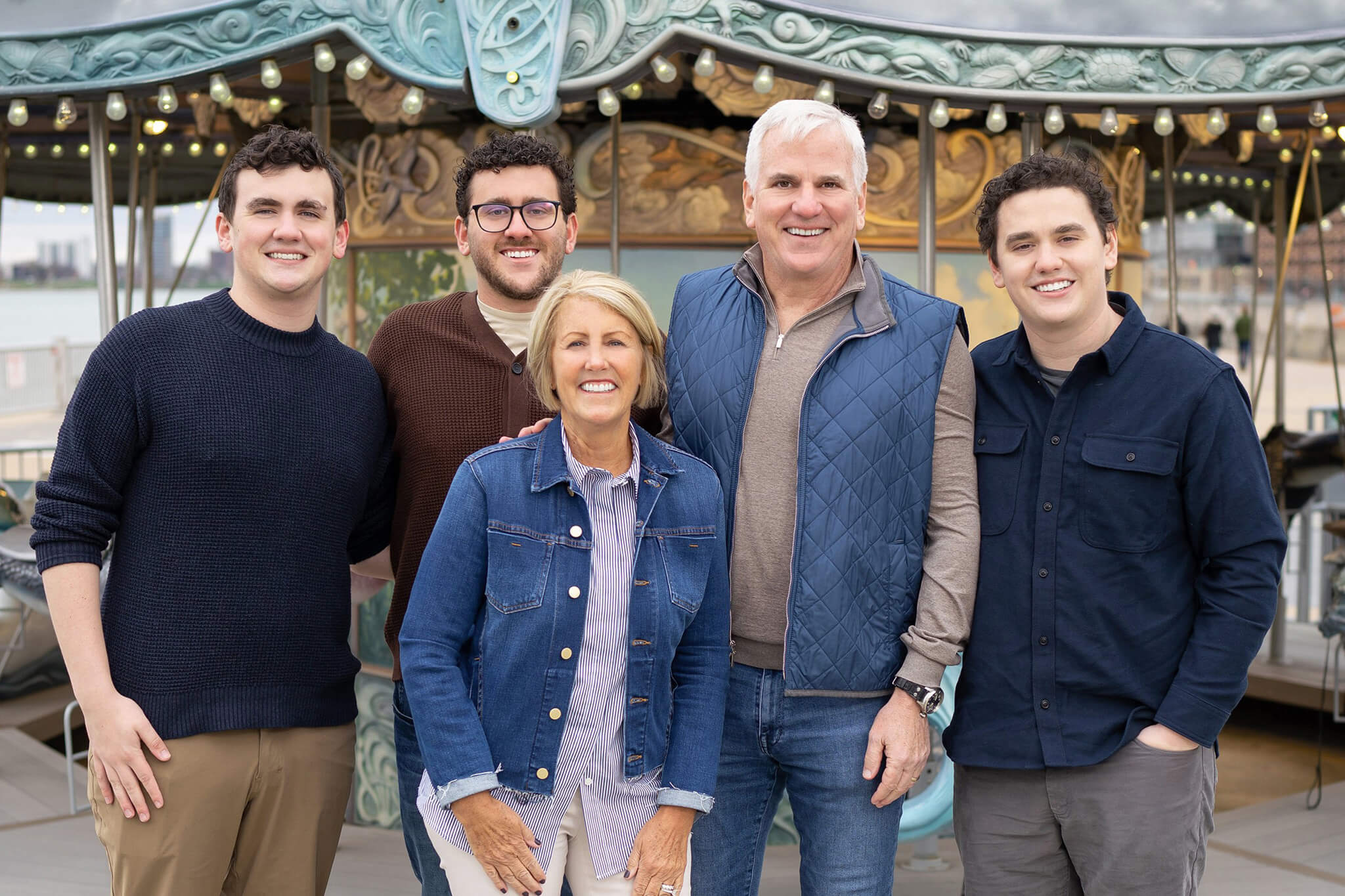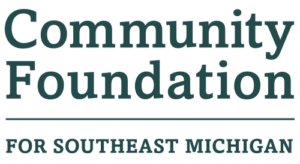
Community Foundation for Southeast Michigan Board of Trustees member and JACK Entertainment Chairman Matt Cullen and his wife, Karen, have partnered with the Community Foundation to make strategic philanthropic investments in the community today, while providing a platform for their sons to continue the family’s legacy of giving in the future.
To say Matt Cullen has made an impact on the metro Detroit community is an understatement.
The Community Foundation for Southeast Michigan Board of Trustees member and JACK Entertainment chairman also chairs the Detroit Riverfront Conservancy, is a member of the Joe Louis Greenway Partnership board and serves in several additional civic leadership roles. He’s known as the visionary behind the Detroit International Riverwalk and has been a key player in transforming the Joe Louis Greenway dream into reality.
Cullen and his wife, Karen, a retired communications executive and fellow community leader, also have partnered with the Community Foundation to create a tradition of giving that the couple is working to ensure will continue with their sons. They’ve established a donor-advised fund that lets them grant to various charities; a multimillion-dollar, permanently endowed fund for the Detroit Riverfront Conservancy; as well as the Cullen Family Foundation.
The Cullen Family Foundation is a supporting organization of the Community Foundation that promotes more just and inclusive communities by advancing public spaces, the environment, social justice, economic development, racial justice, youth development and education.
Here, Matt Cullen shares some reflections on the Joe Louis Greenway and partnering with the Community Foundation to create a philanthropic family legacy.
How did your idea, decades ago, to transform the industrial Detroit riverfront into a beautiful, accessible gathering place for all evolve into the Joe Louis Greenway project?
After leading General Motors’ acquisition of the Renaissance Center for its global headquarters (as the automaker’s former general manager), I quickly became focused on opening the complex to the city and the riverfront. The GM Wintergarden was the first step in that process, but it wasn’t long before we began to explore extending public access to the rest of GM’s property. Then we wondered why we couldn’t keep going with that transformation. That was the genesis of the Detroit Riverfront Conservancy and our vision of building a beautiful, safe and inviting riverfront along the 5.5 miles from the MacArthur Bridge to the Ambassador Bridge. The results have been far beyond anything we could have imagined when we started 20 years ago.
The opportunity to continue to build on that success by extending the Joe Louis Greenway through the city was incredibly compelling. The partnerships that have come together to support that outcome, with the full involvement of the local community, are broad-based and focused on our collective success. The progress to date has been incredible.
What do you hope the Joe Louis Greenway’s impacts will be?
I hope it will build on the success of the riverfront, and bring that same transformation and connectivity throughout the city. I hope it will be a place of beauty for the 23 (nearby) neighborhoods to enjoy and an asset for our entire community to explore. We also believe that the JLG, like the riverfront, will be a driver for economic development. We want to make sure that the development opportunities are inclusive and available to all.
Why did funders and partners choose the Community Foundation for Southeast Michigan to manage the $100 million Unified Greenway Endowment that will support the maintenance and operation of the Joe Louis Greenway and the Detroit riverfront for future generations?
The Community Foundation has been a cornerstone of the Detroit Riverfront Conservancy since its inception and is known as a steadfast steward of financial resources to support our region into the future. In our early days, it was an obvious choice for the Detroit Riverfront Conservancy to partner with the Community Foundation because of the confidence their involvement provided to our funders. When it came time for us to build upon that success with a complex joint endowment structure that would pass scrutiny from the most sophisticated funders in our state, the Community Foundation was the only organization that we considered.
What inspires the commitment you and your wife, Karen, have to improving the quality of life and creating just, inclusive communities throughout Detroit and the metro area?
It’s our hometown and we’ve spent our entire lives here. It’s where our family and friends are. We both adhere to the belief that it is incumbent on folks to be a positive force in their communities, to give back and to strive to make things better for everyone. To make our community a place where people want to live, work and play. For that to happen, we believe we need to prioritize opportunities for those that may not have been provided them in the past.
As philanthropists, why did you and Karen choose to establish the Cullen Family Foundation as a supporting organization of the Community Foundation for Southeast Michigan?
The Community Foundation was an easy choice for us. It has a sterling reputation, a talented and passionate team, and a strong connection to the community. Partnering with the Community Foundation allows for informed philanthropy now and provides a solid platform to potentially include future generations in philanthropic initiatives.
What kinds of conversations have you and Karen had with your children about creating a family legacy?
It’s a work in progress, but we’ve coalesced around a mission statement for the Cullen Family Foundation and our three boys are now involved in evaluating all grant applications. With the support of the Community Foundation team, we have been able to have direct engagement with potential grant recipients and we all work together to make tough decisions on prioritization. When the next generation is making the final decisions, we hope the infrastructure provided by the Community Foundation, together with the shared family learnings that we’re going through now, will position them to make effective choices.
This story first appeared in the Summer 2023 REPORT Newsletter
